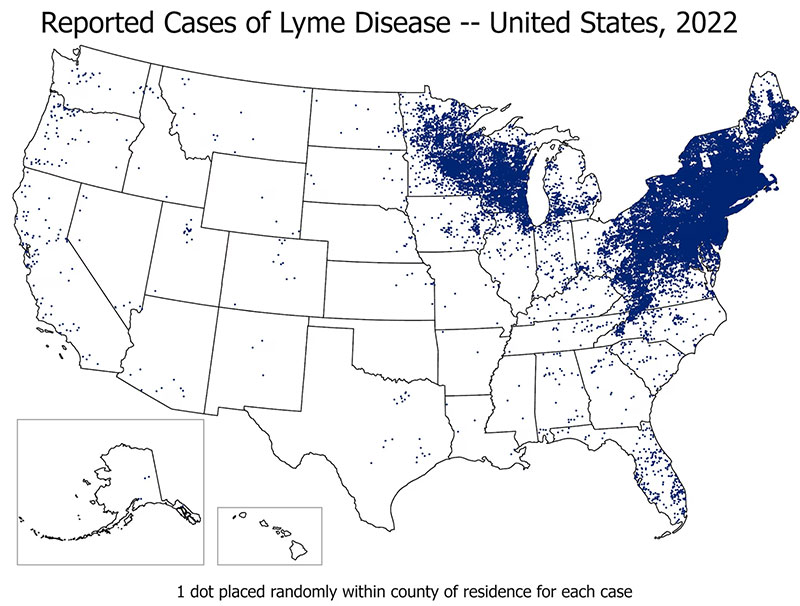 N ineteen years ago, my daughter became mysteriously ill and doctors said it couldn’t possibly be Lyme disease—because there was no Lyme disease in California. In fact, she did have Lyme. But, like many Californians, it took her a frustratingly long time to get properly diagnosed.
N ineteen years ago, my daughter became mysteriously ill and doctors said it couldn’t possibly be Lyme disease—because there was no Lyme disease in California. In fact, she did have Lyme. But, like many Californians, it took her a frustratingly long time to get properly diagnosed.
Now, two decades later, the situation hasn’t really changed. The official way of counting Lyme cases puts California (and 35 other states) at a severe disadvantage. These states are deemed “low incidence” for Lyme, and they must work harder to document each Lyme case.
In 2022, a rule change made it easier for high-incidence states to report Lyme cases—and no surprise, their numbers went up. But with no such simplification for “low incidence” states, California continues to report fewer than 100 cases a year.
Is “Low-Incidence” a Self-Fulfilling prophecy?
Alas, it seems to be a self-fulfilling prophecy: CDC maps and charts reinforce the idea that Lyme isn’t a problem in California, doctors too often don’t even consider tick-borne disease in their differential diagnoses, and Lyme-infected people are left in a limbo of ill health—either undiagnosed or misdiagnosed.

But here’s the rub: California is a huge, ecologically diverse state, but the reporting system lumps it all together.
For example, Mendocino County has historically had a high rate of Lyme-infected ticks and is bigger than Rhode Island and Delaware combined—two high-incidence states. Yet, cases there must meet “low incidence” standards………..Join or login below to continue reading.




























